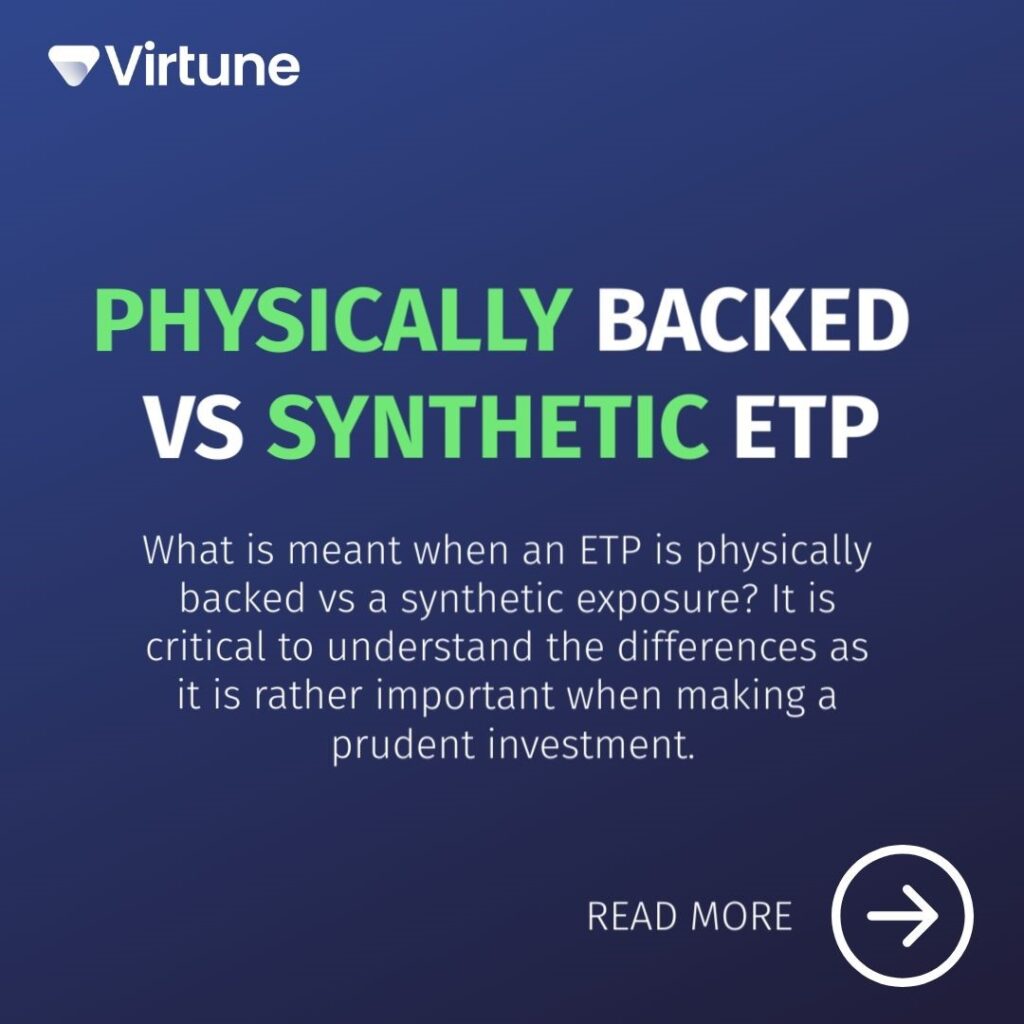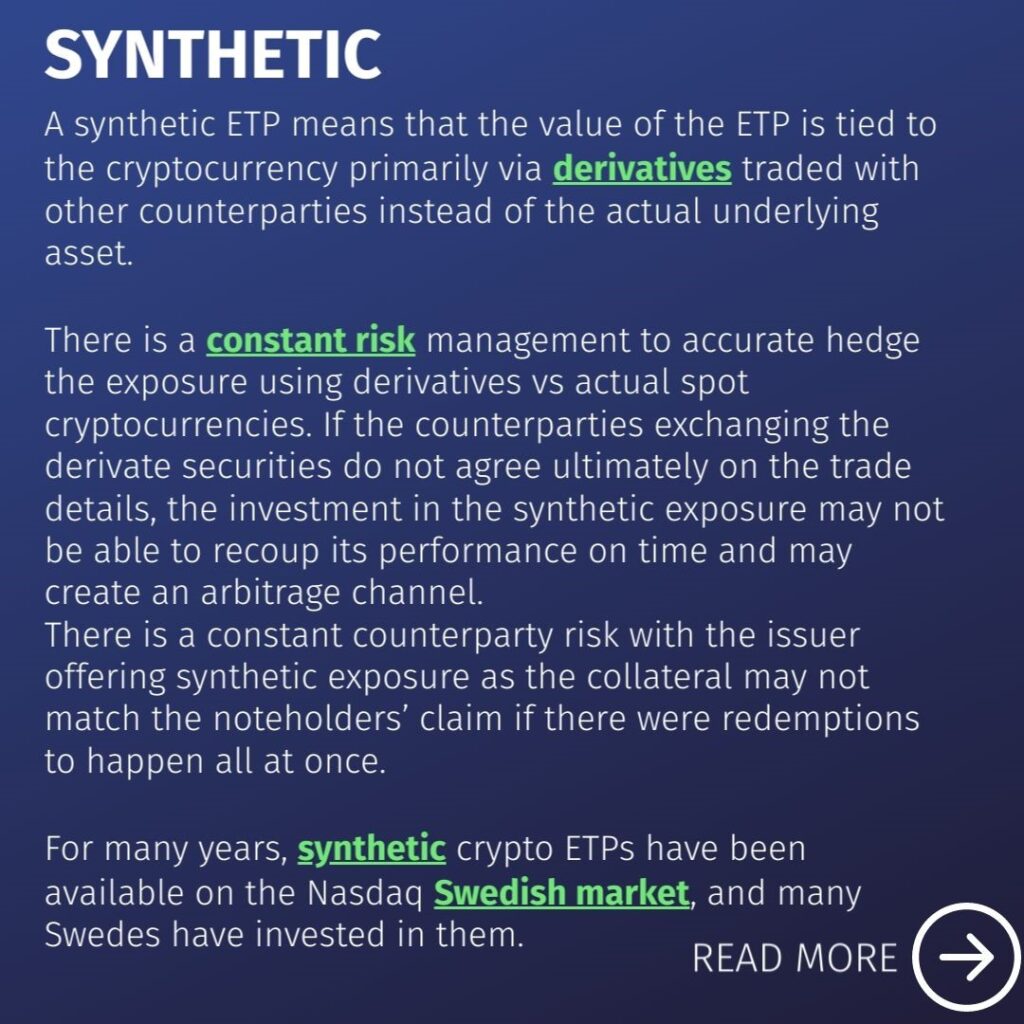The difference between physically backed and synthetic ETPs
We have received many questions from investors if there is any difference between physically backed ETPs compared to synthetic ETPs? The answer is yes!
Physically backed vs. synthetic ETP
What does it mean when an ETP is physically backed versus a synthetic exposure? It is important to understand the differences as it is quite important when making a prudent investment.

Synthetic
A synthetic ETP means that the value of the ETP is linked to a cryptocurrency mainly through derivatives traded with other counterparties instead of the actual underlying asset.
There is constant risk management to precisely hedge the exposure using derivatives versus actual spot cryptocurrencies. If the counterparties exchanging derivative instruments do not agree on the trading details, the investment in the synthetic exposure may not be able to recover its performance in time and may create an arbitrage tunnel.
There is a constant counterparty risk with the issuer offering synthetic exposure as the paper may not match the debt holders’ requirements for it where redemption occurs at once.
For many years, synthetic crypto-ETPs have been available on the Swedish Nasdaq market, and many Swedes have invested in them.

Physically supported
A physically backed exposure confirms that all spot investments are backed by 1:1 crypto investment and are owned and held by a regulated crypto depository.
In this structure, the corresponding cryptocurrencies are always available as 1:1 liquid assets – and the issuer takes no credit risk. Currently, this structure is the only one approved for new crypto ETPs, according to Nasdaq’s requirements.
Virtune’s products are always 100% physically backed.
 Virtune Crypto Top 10 Index ETP (VIR10SEK)
Virtune Crypto Top 10 Index ETP (VIR10SEK)
Broad crypto exposure to up to 10 leading cryptocurrencies in one product.
Trade VIR10SEK
Virtune Crypto Top 10 Index ETP (VIR10SEK)
is a European exchange-traded product. This ETP is traded on several different exchanges, such as Nasdaq Stockholm.
This means that this certificate can be traded through most Swedish banks and internet brokers, such as
DEGIRO
, Nordnet and
Avanza
.
Stay up to date
Stay informed and subscribe to Virtune’s monthly newsletter to receive exclusive insights on the crypto market and the development of Virtune’s products.
Sign up here
.
This market commentary on cryptocurrencies is published on Etfmarknaden.se with permission and in collaboration with Virtune.
Disclaimer
The cryptocurrency market commentary has been produced by Virtune. The information is reported in good faith and reflects the current views of employees, which are subject to change without notice. Virtune takes no responsibility for actions based on the information.














